2 November 2018
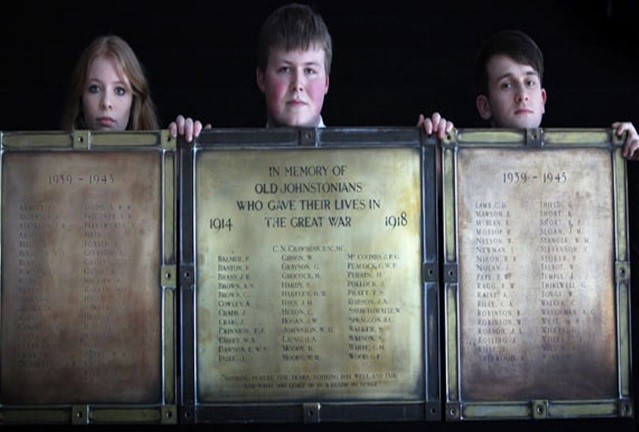
On Friday 9th November 2018 we will commemorate those who lost their lives in the conflicts of the 20th and 21st centuries by observing one minute of silence at 11.00 a.m. The last post will be sounded in the Atrium at 11.00 a.m. and reveille will signal that the minute has passed at 11.01 a.m. During the silence Nigel Martin and Elizabeth Scott, school governors and both current or former local councillors, will lay a wreath on behalf of the 108 Old Johnstonians remembered on the school’s war memorial. This is an important part of the school year and has added poignancy based upon it being the centenary of the 11.00 a.m. Armistice of 1918. We have focused upon the Great War as part of this year’s Culture Festival and will have a series of remembrance assemblies in the week beginning 12th November.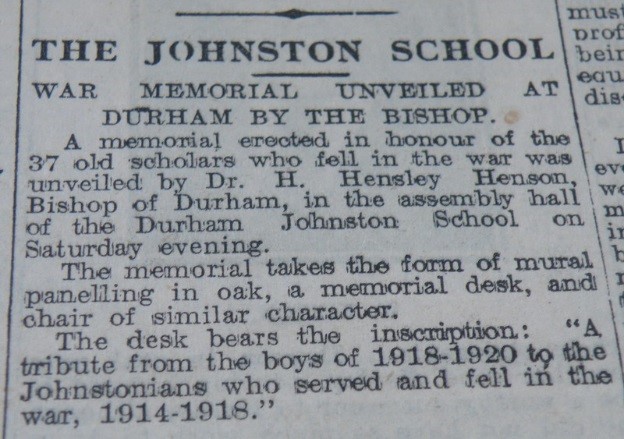
108 former students and teachers of Durham Johnston died during the First and Second World Wars and the school first observed a minute of silence in 1924, 3 years after the first panel of the war memorial was unveiled and blessed by the Bishop of Durham (See the Northern Echo headline above). 37 men died during the Great War and an additional 71 during World War Two. We have completed detailed research on the 37 men that lost their lives during the Great War, 13 of whom died in the final 5 months of the war as it became a war of movement. The extracts below are taken from Mike Robson’s ‘History of Durham Johnston.’ (Mike was a former student and teacher of Art at the school). His book states that:
Two masters were decorated for their services: Mr Cousins (Chemistry) received the Distinguished Service Medal and Mr Dann the Medal of the Victorian Order, which was the monarch’s personal award given to him for acting as interpreter to King George V during royal tours of France. Mr Crawshaw who was killed in action at Salonica received the Military Medal. By the time the war ended, 37 former pupils, and one member of staff, Mr Crawshaw, had died in action. Most of the pupils had served in the D.L.I. while Captain Crawshaw, who died on the Salonica front, was in the Public Schools’ Battalion.
Messrs Hutchinson and Dent returned, to begin long teaching careers at Johnston, but others were unfit. Mr Cousins, who had been awarded the Distinguished Conduct Medal, gave up his career in 1921, while Mr Ward founder of the school Swimming Club, died a short time later. The school war memorial to the Old Johnstonians who died in the war was unveiled at 6pm on Saturday 22nd October 1921, by the Bishop of Durham.
The Durham Advertiser recorded the occasion in the following way:
The memorial has been erected by subscriptions from parents, staff past and present, and pupils of the school. It consists of mural panelling in light oak, of classic design, together with a memorial desk and chairs of similar character. On the memorial desk is a brass inscription plate on which is engraved: ‘A tribute from the boys of 1918-1920 to the Johnstonians who served and fell in the war 1914-1918.’ The design and erection of the memorial have been ably carried out by the North of England School Furnishing Company.
The mural panel contains in bold relief the brass memorial tablet on which is engraved: In memory of the Old Johnstonians who gave their lives in the Great War 1914-191. Below is engraved: “Nothing is here for tears, nothing but fair and well, and what may quiet us in death so noble.” The motto is taken from Milton’s Samson Agonistes. The memorial has been erected in the school assembly hall and will daily remind the boys of the patriotism and self- sacrifice of Johnstonians during the dark days of war. The secretaries Mr L C Bramwell and Mr J D McIntyre and members of the memorial committee are to be congratulated on the completion of a very appropriate memorial which will serve as the inspiration to future generations of boys.
The war memorial was reinstated in 2011 after we moved to a new building at a cost of £2500. This was possible because of contributions from students, parents, staff and local businesses. The first pound raised was donated by Rachel Scrivens, who was in Year 7 at the time and is now studying Conceptual Games Art Design.
The following names are engraved on the Great War section of the memorial:
C.N Crawshaw B. Sce. M.C.
P. Baston - J. R. Brass - A. N. Brown
C. Brown - A. Crawley - J. Crabb
J. Craig - P.J. Crinnion - W.A. Curry
E.W.S. Davison - J. Duke - W. Gibson
G. Grayson - H. Grocock - S. Hardy
H.W. Hardy - J.H. Hays - C. Heron
J.W. Hogan - W.H. Johnston - J.A. Laing
B. Moody - W.R. Moody - J.P.G. McCoombs
G.W.P. Peacock - H. Perrin - J. Pollock
T.S. Pratt - J.A. Robson - W. Smurthwaite
J.C. Spraggon - S. Walker - S. Watson
C.H. White - G.F. Wood.
The graves of Christopher Brown, John Archibald Laing and Jacob Crabb are below. Each year the school’s History students visit their graves on the Western Front as part of the annual battlefields visit.
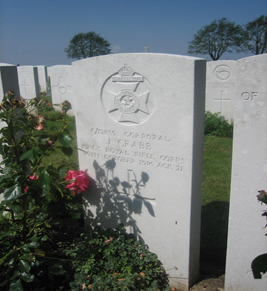
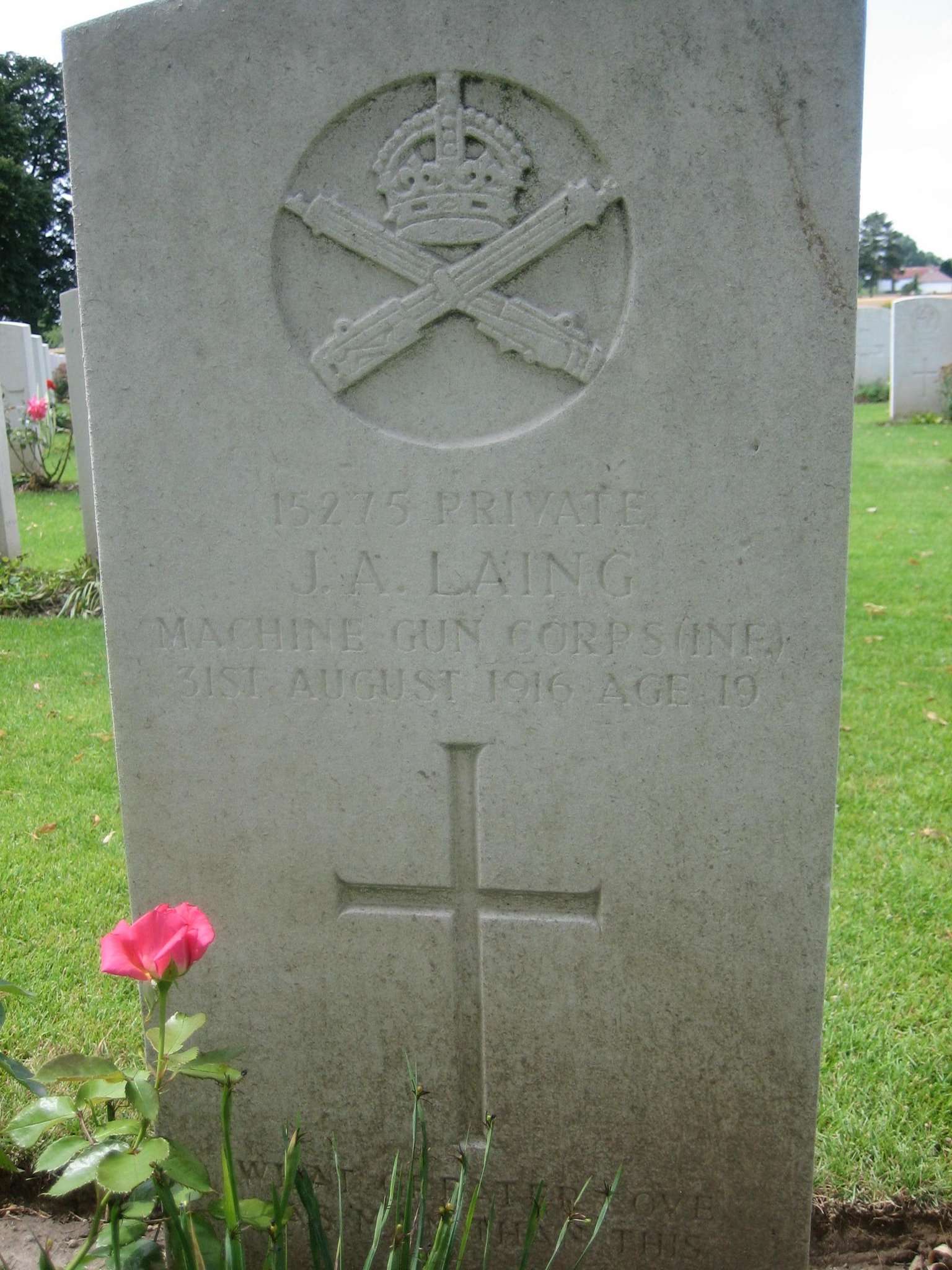
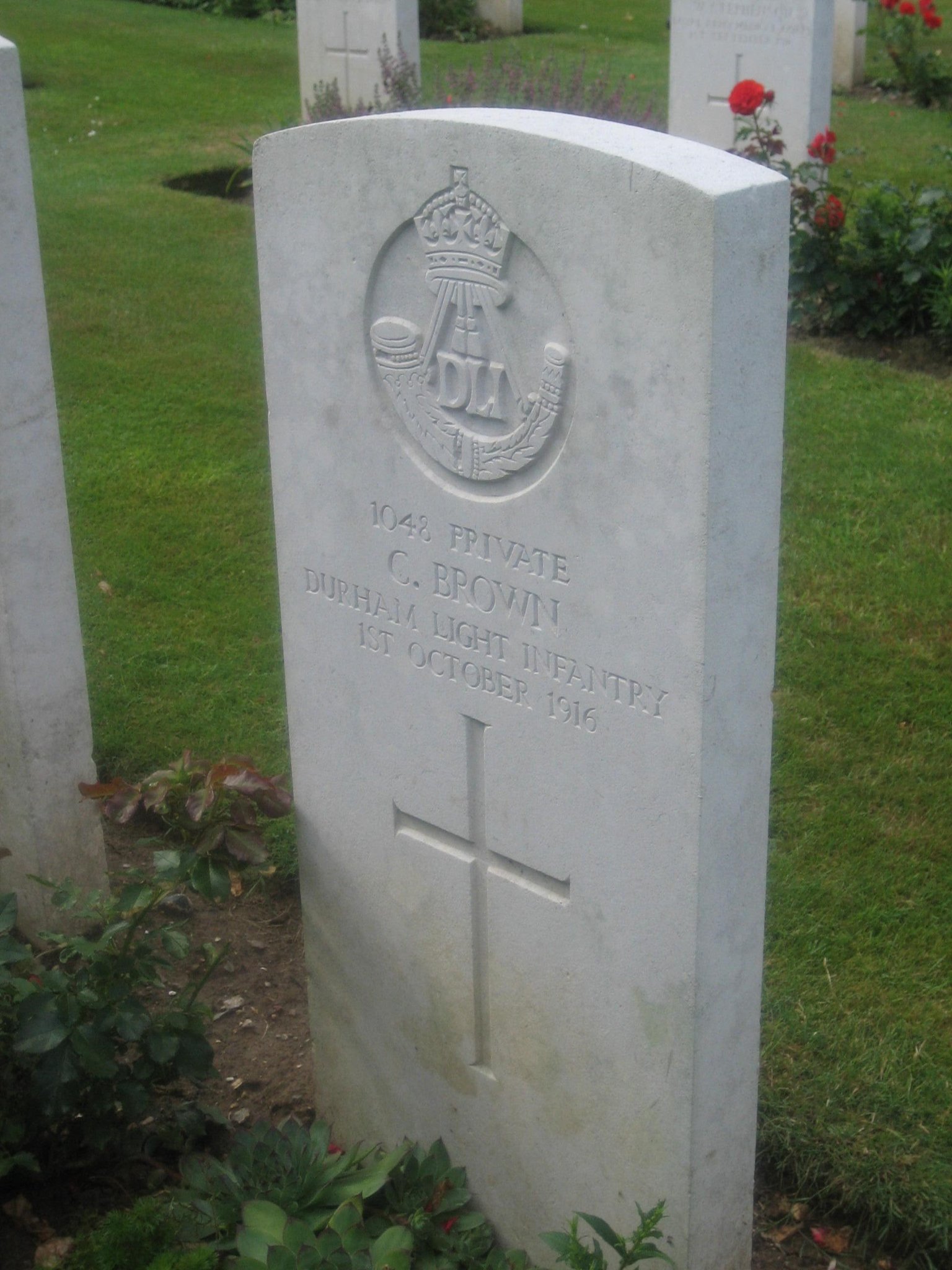
We have a proud tradition of remembrance at Durham Johnston and I would encourage you to discuss this with you son and daughter. Do they have relatives that fought in the conflict? Might they be related to one of the men on our war memorial?
There are also some links providing extra information about the memorial below:
http://www.thejournal.co.uk/news/north-east-news/durham-johnstons-war-memorial-re-dedicated-4438656
http://www.newmp.org.uk/detail.php?contentId=7024
If you have any questions regarding the memorial, or believe that you may be related to one of the named men please contact the school.
Mr O’Sullivan

